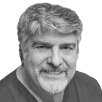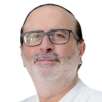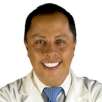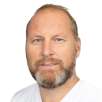ALEXANDRIA, VA, USA – The International and American Associations for Dental Research (IADR/AADR) published the proceedings from the symposium “Tissue Injury and Pulp Regeneration,” held in Geneva, Switzerland, July 2010. The symposium was organized by the IADR Pulp Biology and Regeneration Group, and the papers were published in volume 23, issue 3 of Advances in Dental Research, an E-supplement to the Journal of Dental Research.
A perspective article titled “Tissue Injury and Pulp Regeneration,” was written by Gottfried Schmalz and Kerstin M. Galler, researchers at the University of Regenburg, Germany, and it’s available in the July issue of the Journal of Dental Research. The perspective piece gives a brief overview of some of the manuscripts presented at the symposium.
The symposia presenters highlighted that despite the high success rate of traditional root canal therapy of up to 95% under optimal clinical conditions, the idea of pulp (and dentin) regeneration is tempting, not only from the philosophical point of view that a full healing/total recovery is the ultimate goal of medical therapy. Further reasons that regenerating a functional dental pulp would be preferable to traditional root canal therapy include the wetting of dentin, the capability of new dentin formation after caries attack, the transmission of pain as an indicator of tissue damage, and an active tissue defense mechanism against invading micro-organisms.
The new data presented and the vivid discussion at the Tissue Injury and Pulp Regeneration symposium illustrate that pulp/dentin regeneration is a highly relevant and active area of research. The elements for dental pulp engineering, namely stem cells, scaffolds and differentiation factors, are available, and the interplay among these elements needs to be evaluated further for optimized strategies. Studies, as presented in the symposium’s proceedings, demonstrate proof of principle.
“We were pleased that 13 manuscripts, based on the oral presentations given at the symposia for Tissue Injury and Pulp Regeneration, are now available to the scientific community,” said Gottfried Schmalz.
“Those 13 manuscripts represent some of the latest research in tissue injury and pulp regeneration and they comprise this issue of the Advances of Dental Research.”
Visit http://adr.sagepub.com for more information and to read volume 23, issue 3 of the Advances in Dental Research, or contact Ingrid L. Thomas at ithomas@iadr.org to access the articles online.
About the Journal of Dental Research
The IADR/AADR Journal of Dental Research is a multidisciplinary journal dedicated to the dissemination of new knowledge in all sciences relevant to dentistry and the oral cavity and associated structures in health and disease. At 4.195, the JDR holds the highest Five-Year Impact Factor of all dental journals publishing original research, with a cited half-life >10 years, reflecting the influential nature of the Journal’s content. It also has the highest Eigenfactor Score in the field.
About the International Association for Dental Research
The International Association for Dental Research (IADR) is a nonprofit organization with nearly 11,000 individual members worldwide, dedicated to: (1) advancing research and increasing knowledge to improve oral health, (2) supporting the oral health research community, and (3) facilitating the communication and application of research findings for the improvement of oral health worldwide. To learn more, visit www.iadr.org. The American Association for Dental Research (AADR) is the largest Division of IADR, with nearly 4,000 members in the United States. To learn more, visit www.aadronline.org.
CHICAGO — The American Dental Association (ADA) invites you to check out the latest oral health topics in the July 2011 issue of The Journal of the ...
Lee Culp, técnico dental y profesor de prostodoncia en la Universidad de Carolina del Norte, es un verdadero pionero en la evolución de la ...
El XV Magno Congreso, organizado en Ciudad de Guatemala por el distribuidor de productos dentales Magno Dental, contó con conferencias y con una amplia ...
Este caso clínico explica el manejo de un paciente de la tercera edad con osteonecrosis en el maxilar superior izquierdo, que tenía antecedente de cáncer...
"Hemos disfrutado de unos días fantásticos entre colegas y amigos", "gracias por esta experiencia tan magnífica y ...
La Sociedad Española de Implantes (SEI), junto con la Sociedad Portuguesa de Implantología y Oseointegración (SOPIO), organiza un Simposium Internacional...
El Simposium Internacional de Investigación en Implantología Oral 2021 organizado por la Sociedad Española de Implantes (SEI) se celebró con ...
El tratamiento para aclarar el color de los dientes es actualmente muy común en la clínica odontológica. Por ello, es importante resaltar que este ...
The Ibero-Latin American Dental Federation (FDILA) will dedicate the four days of its congress in Puerto Vallarta, Mexico, to the "A Smile for ...
Una nueva serie de contra-ángulos de alta velocidad permite ahora procesar y remover fácilmente materiales cerámicos como el zirconio, por lo que son la ...
Webinars en vivo
lun. 13 de mayo 2024
7:00 CST (Mexico City)
Webinars en vivo
lun. 13 de mayo 2024
11:00 CST (Mexico City)
Doc. MUDr. Eva Kovaľová PhD.
Webinars en vivo
mié. 15 de mayo 2024
8:00 CST (Mexico City)
Prof. Dr. med dent. David Sonntag
Webinars en vivo
mié. 22 de mayo 2024
10:00 CST (Mexico City)
Dr. Nikolay Makarov DDS, MSC, PhD.
Webinars en vivo
jue. 23 de mayo 2024
10:00 CST (Mexico City)
Webinars en vivo
jue. 23 de mayo 2024
10:00 CST (Mexico City)
Martin Christopher Hoftvedt DDS, Joachim Scott Erenius DDS
Webinars en vivo
jue. 23 de mayo 2024
16:00 CST (Mexico City)



 Austria / Österreich
Austria / Österreich
 Bosnia y Herzegovina / Босна и Херцеговина
Bosnia y Herzegovina / Босна и Херцеговина
 Bulgaria / България
Bulgaria / България
 Croacia / Hrvatska
Croacia / Hrvatska
 República Checa y Eslovaquia / Česká republika & Slovensko
República Checa y Eslovaquia / Česká republika & Slovensko
 Francia / France
Francia / France
 Alemania / Deutschland
Alemania / Deutschland
 Grecia / ΕΛΛΑΔΑ
Grecia / ΕΛΛΑΔΑ
 Italia / Italia
Italia / Italia
 Países Bajos / Nederland
Países Bajos / Nederland
 Nórdico / Nordic
Nórdico / Nordic
 Polonia / Polska
Polonia / Polska
 Portugal / Portugal
Portugal / Portugal
 Rumania y Moldavia / România & Moldova
Rumania y Moldavia / România & Moldova
 Eslovenia / Slovenija
Eslovenia / Slovenija
 Serbia & Montenegro / Србија и Црна Гора
Serbia & Montenegro / Србија и Црна Гора
 España / España
España / España
 Suiza / Schweiz
Suiza / Schweiz
 Turquía / Türkiye
Turquía / Türkiye
 Reino Unido e Irlanda / UK & Ireland
Reino Unido e Irlanda / UK & Ireland
 Internacional / International
Internacional / International
 Brasil / Brasil
Brasil / Brasil
 Canadá / Canada
Canadá / Canada
 EE UU / USA
EE UU / USA
 China / 中国
China / 中国
 India / भारत गणराज्य
India / भारत गणराज्य
 Japón / 日本
Japón / 日本
 Paquistán / Pākistān
Paquistán / Pākistān
 Vietnam / Việt Nam
Vietnam / Việt Nam
 ASIA / ASEAN
ASIA / ASEAN
 Israel / מְדִינַת יִשְׂרָאֵל
Israel / מְדִינַת יִשְׂרָאֵל
 Algeria, Morocco & Tunisia / الجزائر والمغرب وتونس
Algeria, Morocco & Tunisia / الجزائر والمغرب وتونس
 Oriente Medio / Middle East
Oriente Medio / Middle East
:sharpen(level=0):output(format=jpeg)/up/dt/2024/05/Posado-de-pie-todos.jpg)
:sharpen(level=0):output(format=jpeg)/up/dt/2023/03/technology-7111799_1920.jpg)
:sharpen(level=0):output(format=jpeg)/up/dt/2024/05/0-Expo-AMIC2-2024.jpg)
:sharpen(level=0):output(format=jpeg)/up/dt/2024/05/0-Expo-AMIC-Sping1-2024.jpg)
:sharpen(level=0):output(format=jpeg)/up/dt/2024/05/1-Francisco-Marichi-Rodriguez-Director-FO-UNAM.jpg)










:sharpen(level=0):output(format=png)/up/dt/2014/02/3shape.png)
:sharpen(level=0):output(format=png)/up/dt/2022/06/RS_logo-2024.png)
:sharpen(level=0):output(format=png)/up/dt/2022/01/HASSBIO_Logo_horizontal.png)
:sharpen(level=0):output(format=png)/up/dt/2022/01/Straumann_Logo_neu-.png)
:sharpen(level=0):output(format=png)/up/dt/2014/02/kuraray.png)
:sharpen(level=0):output(format=png)/up/dt/2010/11/Nobel-Biocare-Logo-2019.png)
:sharpen(level=0):output(format=jpeg)/up/dt/e-papers/339245/1.jpg)
:sharpen(level=0):output(format=jpeg)/up/dt/e-papers/338233/1.jpg)
:sharpen(level=0):output(format=jpeg)/up/dt/e-papers/336829/1.jpg)
:sharpen(level=0):output(format=jpeg)/up/dt/e-papers/329684/1.jpg)
:sharpen(level=0):output(format=jpeg)/up/dt/e-papers/328283/1.jpg)
:sharpen(level=0):output(format=jpeg)/up/dt/e-papers/326428/1.jpg)
:sharpen(level=0):output(format=jpeg)/up/dt/2011/06/60f4b79236f269319d8a06b1a302b8c5.jpg)

:sharpen(level=0):output(format=jpeg)/up/dt/2024/05/Posado-de-pie-todos.jpg)
:sharpen(level=0):output(format=gif)/wp-content/themes/dt/images/dt-user.gif)
:sharpen(level=0):output(format=jpeg)/up/dt/2011/06/4c6ee51660ffa9f08c55138349c0ff9c.jpg)
:sharpen(level=0):output(format=jpeg)/up/dt/2016/07/8a6fe70b885be8deded6f8983c3093fb.jpg)
:sharpen(level=0):output(format=jpeg)/up/dt/2024/02/Magno-Dental-Congreso-14.jpg)
:sharpen(level=0):output(format=jpeg)/up/dt/2024/04/Fig-1_Ramirez-P.jpg)
:sharpen(level=0):output(format=jpeg)/up/dt/2017/07/9787c55633ebd544b45b64cad8e8bdbd.jpg)
:sharpen(level=0):output(format=jpeg)/up/dt/2022/01/Simposio_Implantes_Badajoz.jpg)
:sharpen(level=0):output(format=jpeg)/up/dt/2021/04/Simposio_SEI2021.jpg)
:sharpen(level=0):output(format=jpeg)/up/dt/2023/09/Fig-0_Jadad.jpg)
:sharpen(level=0):output(format=jpeg)/up/dt/2010/03/b352584b8969831e7b7aa4f5dee2a349.jpg)
:sharpen(level=0):output(format=jpeg)/up/dt/2023/11/Synea1_Power_Edition_Spray.jpg)











:sharpen(level=0):output(format=jpeg)/up/dt/2024/05/Posado-de-pie-todos.jpg)
:sharpen(level=0):output(format=jpeg)/up/dt/2023/03/technology-7111799_1920.jpg)
:sharpen(level=0):output(format=jpeg)/up/dt/2024/05/0-Expo-AMIC2-2024.jpg)
:sharpen(level=0):output(format=jpeg)/up/dt/e-papers/338233/1.jpg)
:sharpen(level=0):output(format=jpeg)/up/dt/e-papers/336829/1.jpg)
:sharpen(level=0):output(format=jpeg)/up/dt/e-papers/329684/1.jpg)
:sharpen(level=0):output(format=jpeg)/up/dt/e-papers/328283/1.jpg)
:sharpen(level=0):output(format=jpeg)/up/dt/e-papers/326428/1.jpg)
:sharpen(level=0):output(format=jpeg)/up/dt/e-papers/339245/1.jpg)
:sharpen(level=0):output(format=jpeg)/up/dt/e-papers/339245/2.jpg)
:sharpen(level=0):output(format=jpeg)/wp-content/themes/dt/images/3dprinting-banner.jpg)
:sharpen(level=0):output(format=jpeg)/wp-content/themes/dt/images/aligners-banner.jpg)
:sharpen(level=0):output(format=jpeg)/wp-content/themes/dt/images/covid-banner.jpg)
:sharpen(level=0):output(format=jpeg)/wp-content/themes/dt/images/roots-banner-2024.jpg)
To post a reply please login or register